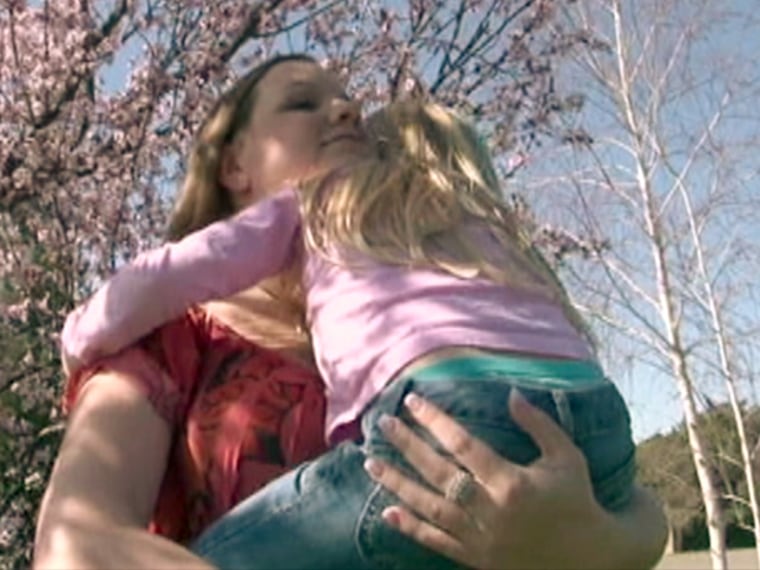Before a car accident five years ago destroyed her right hand, there were so many little things Emily Fennell took for granted: putting her hair in a ponytail, playing blocks with her toddler — giving her daughter a two-handed bear hug.
Afterwards, the formerly right-handed Fennell had to learn to do everything from tying her shoes to writing to driving her car with just her left hand.
But now Fennell has a transplant, a donated “new” hand attached to her own skin, bones, nerves and tendons by a surgical team from the University of California, Los Angeles.
“It has been surreal to see that I have a hand again, and to be able to wiggle my fingers,” says the 26-year-old single mom from Yuba City, Calif. “My 6-year-old daughter has never seen me with a [right] hand. She looked at it, touched it and said it was ‘cool.’”
But her daughter’s appreciation goes far beyond that. “She can’t wait for me to be able to do more things with her -- teach her to tie her shoes, play catch with her,” Fennell told TODAY’s Meredith Vieira.
Fennell’s right hand was crushed in a rollover car accident in 2006. Doctors soon realized that her hand was too badly damaged for them to save it, so they amputated. It was a hard adjustment for Fennell, but toughest for her was the way it interfered with caring for her daughter.
“She really wanted Mommy and Mommy couldn’t do everything for her anymore,” Fennell told TODAY. “That was hard.”
Then Fennell read about a new hand transplant program at UCLA. It sounded like the perfect solution, but there were downsides, not the least of which was a heightened risk for deadly infections. Because her immune system would have to be suppressed to stop her body from rejecting the new hand, even a minor illness could be life-threatening.

Fennell and her family researched the issue, and eventually “we decided me being made whole again -- the benefits outweighed the risks,” she told Vieira.
Just a month after she signed up, she got a call saying that a donor hand had become available. She was told to get to the hospital as fast as possible.
As Fennell was wheeled into the operating room at UCLA, the donated hand arrived at the hospital on ice.
Surgeons raced to attach the hand to Fennell’s arm. “Just like any other organ, time is of the essence because there is that period where the hand doesn’t have blood flow,” hand transplant surgeon, Dr. Kodi Azari, told TODAY.
Azari and his team connected the bones, arteries, veins and tendons in Fennell’s arm to those in the donor hand in a grueling procedure that took 14 hours to complete. It was the first hand transplant performed at UCLA, and only the 14th in the U.S.
Fennell, Azari said, was exactly the kind of patient his team was looking for.
“With Emily it was her determination and her level of understanding, not just about the procedure but about herself and what she’s capable of, that made her the perfect candidate for the transplant,” he told Vieira. “Emily is really one of those pioneers who is delving into this brand new and brave new field.”
After a month in the hospital, where doctors monitored Fennell for infection and signs that the hand was being rejected, the young mom was sent home. She’s amazed at what she’s already able to do with the new hand. “Right now I can wiggle the fingers and after hand therapy for a couple of hours in the morning I can pick up different objects,” she told Vieira.
So far, though, she can’t feel anything in her new hand. “I won’t have sensation probably for close to a year,” she told Vieira. “The nerves take the longest to regenerate.”
For the next year, Fennell will have to undergo intensive occupational therapy to help her brain accept the hand and to mechanically learn how to use it.
In the meantime, there’s another mom who is overjoyed with the new hand.
“When you have a child, one of the first questions a mom asks is do they have all their fingers and toes and she did when she was born,” said Kimberly Herman, Fennell’s own mom. “And that had been taken away by a tragic accident. The team here at UCLA gave that back.”